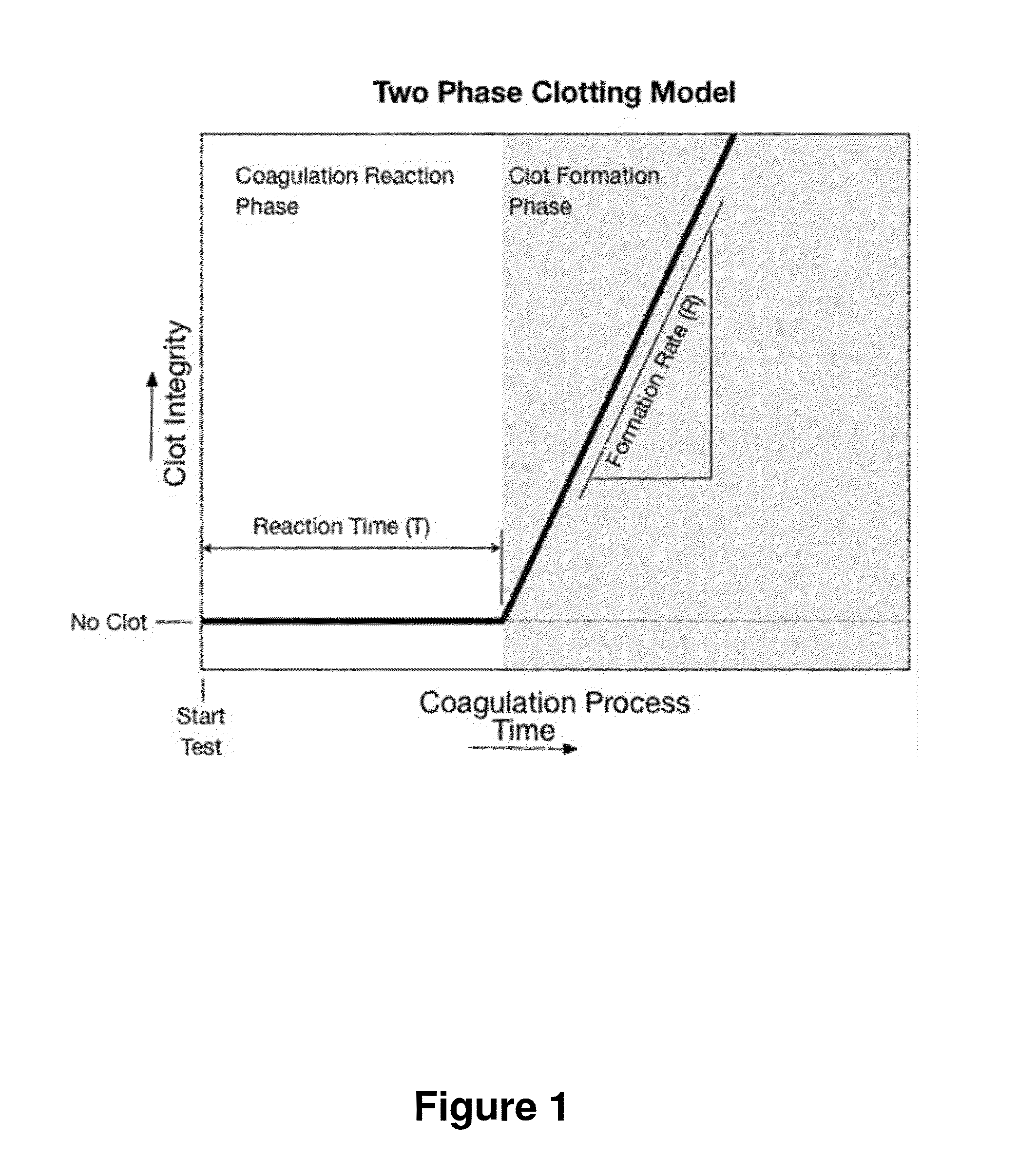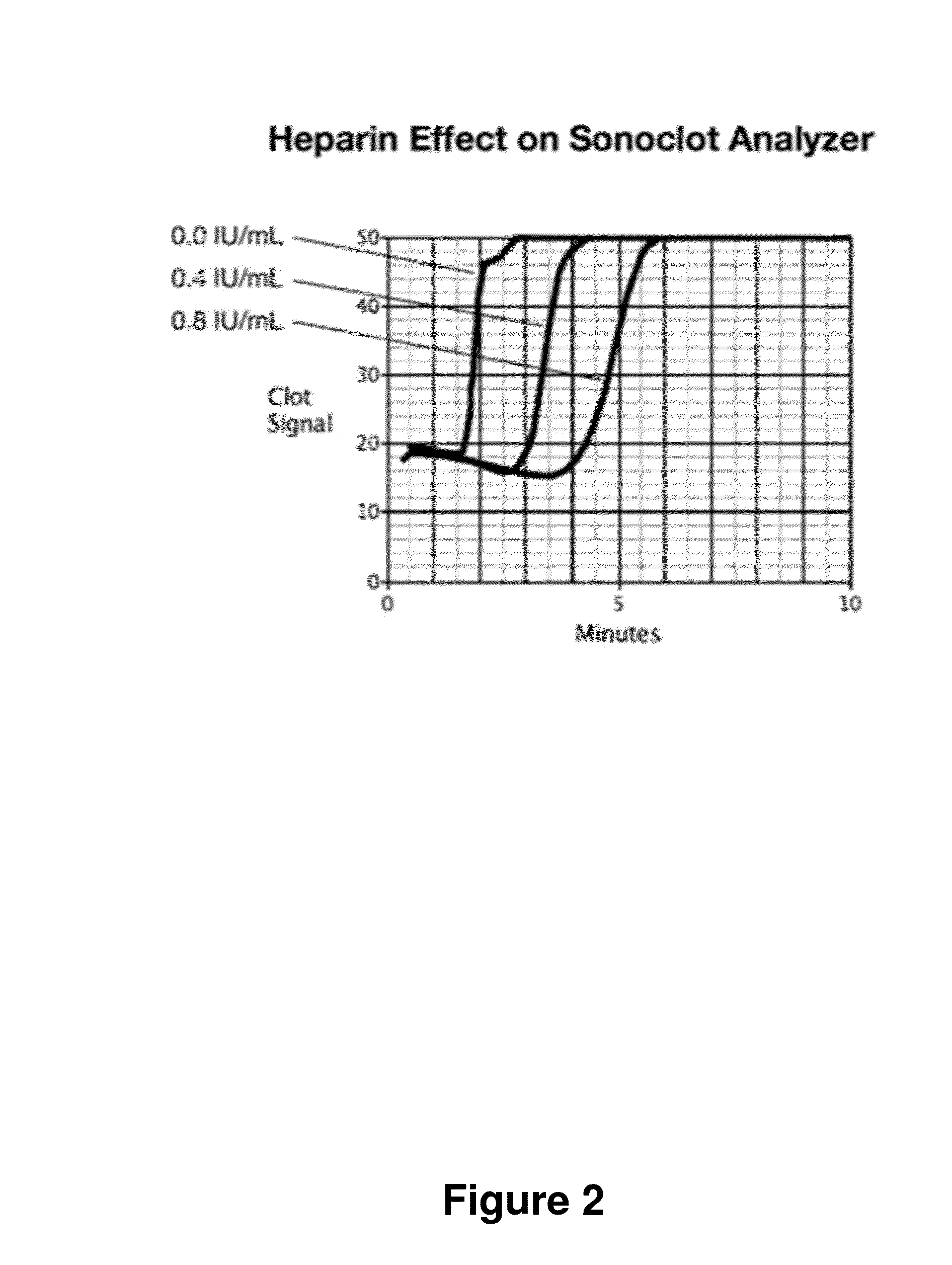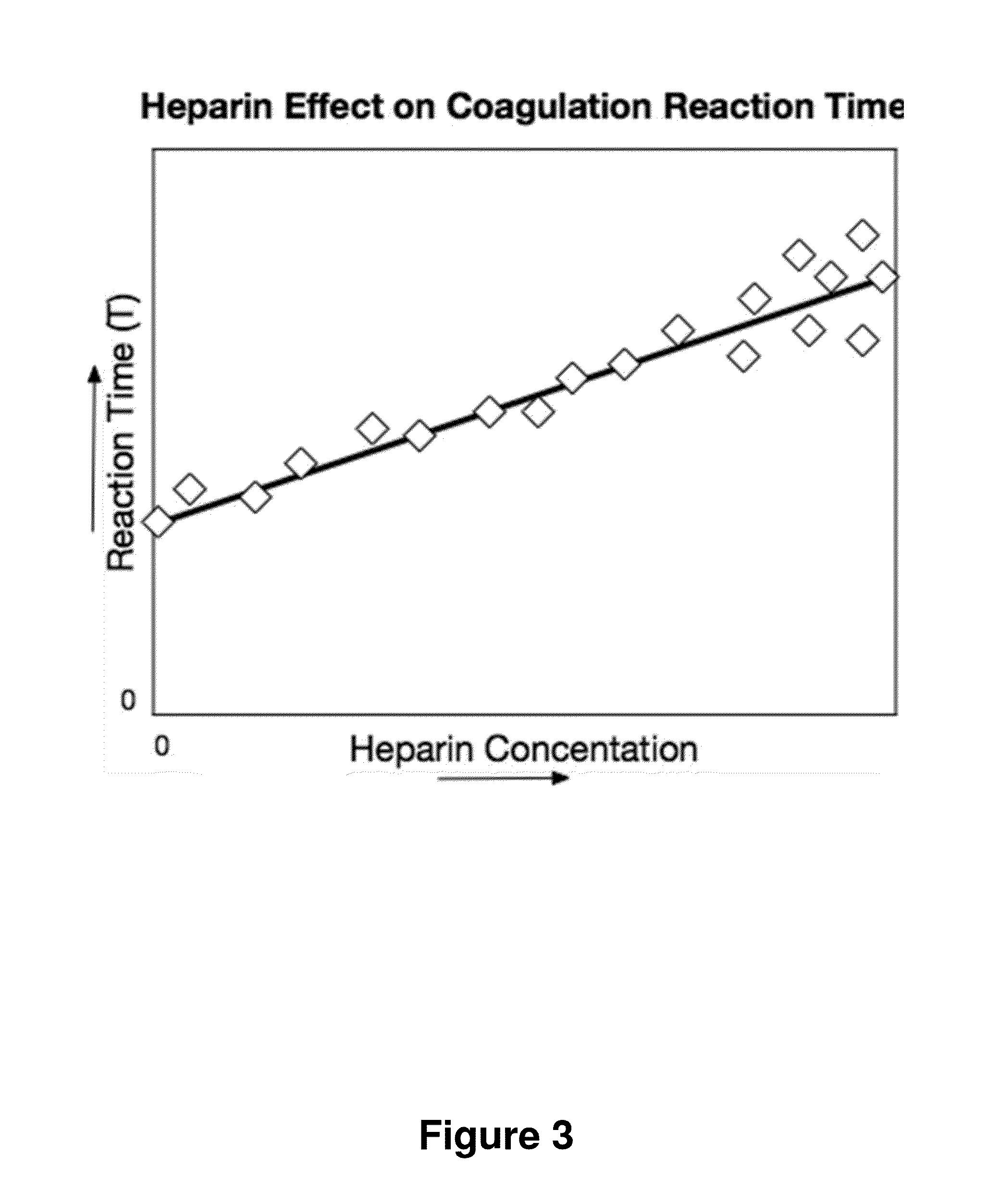Heparin Concentration and Heparin Response Imbalance Determination Method Within a Fluid Containing Heparin
- Summary
- Abstract
- Description
- Claims
- Application Information
AI Technical Summary
Benefits of technology
Problems solved by technology
Method used
Image
Examples
example 1
Single Channel Embodiment
[0054]A simple embodiment of the heparin concentration or heparin response imbalance method is implemented on a single channel instrument. The implementation requires an instrument capable of measuring multiple aspects of the two-phase coagulation model, such as T and R results. The instrument calculates a heparin concentration from the T and R results. The instrument can be calibrated to calculate heparin concentration estimates in either whole blood or plasma. The process utilizes two separate procedures: a calibration procedure that derives the relationships between T and R results and heparin concentration in either whole blood or plasma, and a test analysis procedure that runs a test, calculates T and R, and then calculates a heparin concentration estimate based on the T and R results.
[0055]The single channel embodiment procedure for running a test and calculating a heparin concentration in whole blood is described in the flow chart contained in FIG. 5....
example 2
Two Channel Embodiment
[0066]FIG. 9 shows another embodiment of the method. Here, two tests are run for each blood sample: one sample run on the instrument and a second sample run on the instrument after first neutralizing or removing the heparin. In this test analysis, the two Reaction Times, T and TØh, the Reaction Time without heparin, are used to make an improved estimate, HW(T,TØh), the heparin concentration estimate that characterizes the Coagulation Reaction Phase performance. T and TØh results are combined to generate an estimate that corrects for patient to patient variability in T when no heparin is present. In this embodiment, HW(T,TØh) is implemented using ΔT, the difference: T−TØh; thus HW(T,TØh) is implemented with HW(ΔT). HW(T,TØh) has lower variance than HW(T) at low heparin levels. However, HW(T,TØh) has less variance than HW(T) only at low heparin concentrations.
[0067]The two Reaction Rates, R and RØh, the Formation Rate without heparin, are used to make an improved...
example 3
Calibration Equations
[0073]FIGS. 7, 8, 11, and 12 show examples where an improved estimation of heparin concentration is obtained from two or more estimates of the heparin concentration. In these examples heparin concentration estimation equations are used to determine two or more heparin concentration estimates from [T, R] or [T, R, TØh, RØh] test results. Additionally, a variance weighted average of the individual heparin concentration estimates is used to determine a final heparin concentration result. The most precise combined estimate from multiple independent estimates is achieved when the weight used for an individual estimate is equal to the inverse of the variance of the estimate. Estimates with lower variance contribute greater weight than estimates with higher variance. During calibration, the standard error of each intermediate result is estimated as a function of the corresponding initial heparin parameter. The weight is the inverse of the square of the standard error.
[...
PUM
| Property | Measurement | Unit |
|---|---|---|
| Weight | aaaaa | aaaaa |
| Concentration | aaaaa | aaaaa |
| Viscosity | aaaaa | aaaaa |
Abstract
Description
Claims
Application Information
 Login to View More
Login to View More - R&D
- Intellectual Property
- Life Sciences
- Materials
- Tech Scout
- Unparalleled Data Quality
- Higher Quality Content
- 60% Fewer Hallucinations
Browse by: Latest US Patents, China's latest patents, Technical Efficacy Thesaurus, Application Domain, Technology Topic, Popular Technical Reports.
© 2025 PatSnap. All rights reserved.Legal|Privacy policy|Modern Slavery Act Transparency Statement|Sitemap|About US| Contact US: help@patsnap.com



